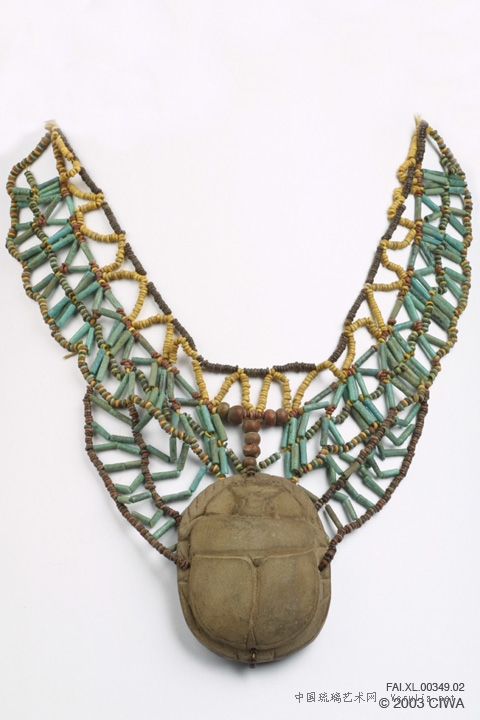说到珠子总是有兴趣的,看看西方的高古珠子……
This unusual bead presents a trailed decoration on translucent turquoise glass reminiscent of the iconography of the Egyptian snake god Apophis. The center decoration consists of an opaque red trail coiled 22 times over a yellow background. The shape of these coils is typical of friezes portraying Apophis. Along the sides of that center motif, stretches an undulating trail of spiral cane in hues that now look dark brown and salmon. Once the decoration was applied, the bead was shaped by marvering (grinding?) into a dodecahedron. Probably Egypt, period undetermined.
Dating: 1500 BC–1000 AD
Origin: Egypt
Material: Glass (all types)
Physical: 2.7cm. (1.1 in.) - 19 g. (.7 oz.)
Catalog: GLS.VS.00247

Egypt1500BC–1000
还是继续埃及
还是说珠子的资料
Amulet
Amulets are objects generally kept on the person that are believed to confer some benefit to the wearer. While turn of the century archeologist Flinders Petrie (1914) enraged that “the belief in the magic effect of inanimate objects on the course of events is one of the lower stages of the human mind in seeking for principles of natural action. . .”, he had to concede that the use of amulets, talismans, and charms is very ingrained in many cultures to the present day. Many of us use lucky pens and wear religious medals without believing literally in their powers to affect our lives. But we still use them. They help us muster the confidence we need in times of self doubt. They empower us to dare, to believe in ourselves, to heal ourselves. Egyptians may have felt the same way. They used amulets on themselves and on their dead. Egyptians also seem to have had a passion for jewelry, and amulets were a good excuse to wear more jewelry.
Dating: 1069 BC–664 BC
Origin: Egypt, Lower Egypt
Material: Faience (all types)
Physical: 72cm. (28.1 in.) - 12 g. (.4 oz.)

FAI.VL.00233.03-ZXL
Necklace
Dating: 1085 BC–945 BC
Origin: Egypt, Upper Egypt, Thebes
Material: Faience (all types)
Physical: 30cm. (11.7 in.)

FAI.XL.00349.02-ZXL
Glass Beads
Dating: 664 BC–525 BC
Origin: Egypt,
Material: Glass (all types)
Physical: 2.2cm. (.9 in.) - 2.5 g. (.1 oz.)

GLS.VS.00249.02-ZXL
Finger ring
Dating: 1370 BC–1320 BC
Origin: Egypt, Middle Egypt, El-Amarna [Akhetaten]
Material: Faience (all types)
Physical: 2.2cm. (.9 in.) - 1 g. (0 oz.)

[1] [2] 下一页
|




